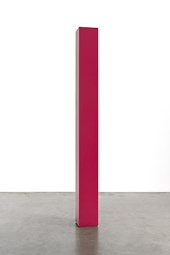
Anne Truitt "Sculpture 1962 - 2004"
at Matthew Marks Gallery 522 W 22nd St.
in the Chelsea 22nd area
This event has ended - (2010-05-08 - 2010-06-26)
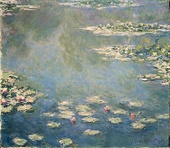
Claude Monet "Late Work"
at Gagosian Gallery 21st Street
in the Chelsea 21st area
This event has ended - (2010-05-01 - 2010-06-26)
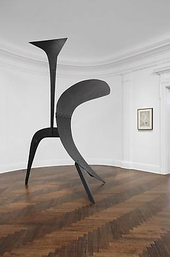
Yves Tanguy and Alexander Calder "Between Surrealism and Abstraction"
at Mnuchin Gallery
in the Upper East Side area
This event has ended - (2010-04-21 - 2010-06-12)
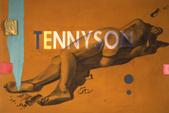
David Salle "Some Pictures from the 80s"
at Mary Boone Gallery (Chelsea)
in the Chelsea 24th area
This event has ended - (2010-05-08 - 2010-06-26)
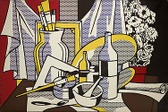
Roy Lichtenstein "Still Lifes"
at Gagosian Gallery 24th Street
in the Chelsea 24th area
This event has ended - (2010-05-08 - 2010-07-30)
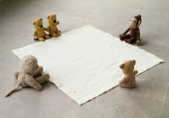
Mike Kelley "Arenas"
at Skarstedt Gallery
in the Upper East Side area
This event has ended - (2010-05-06 - 2010-06-25)
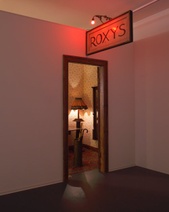
Edward Kienholz "Roxys"
at David Zwirner 19th Street
in the Chelsea 14th - 19th area
This event has ended - (2010-05-06 - 2010-06-26)
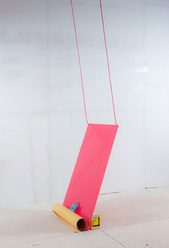
Andy Coolquitt "We Care About You"
at Lisa Cooley Fine Art
in the Lower East Side area
This event has ended - (2010-05-09 - 2010-06-27)
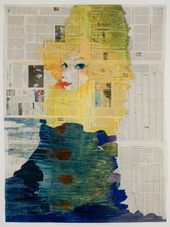
Gabriel Vormstein "Baby ABC"
at Casey Kaplan
in the Chelsea 27th area
This event has ended - (2010-04-02 - 2010-05-01)
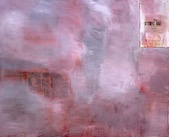
Richard Prince "Tiffany Paintings"
at Gagosian Gallery Madison Avenue
in the Upper East Side area
This event has ended - (2010-05-07 - 2010-06-19)

As an avid art-goer, I am blessed in my vicinity to the Chelsea gallery run. I can practically stumble out my front door and be in line with the newest, sexiest shows out there (and with a bit of effort, I can easily venture downtown or uptown, in search of that which is new and sexy). Yet, my most recent must-see picks were Anne Truitt’s retrospective at Matthew Marks Gallery and the Claude Monet late-works exhibition at Gagosian. What gives? True, the former speaks to my incessant love for Minimalist art (and in my opinion Truitt is way under-appreciated in New York) and the latter my slowly eclipsing embrace of French Expressionism. But neither are ‘new’, nor should they be dubbed “sexy” (beautiful, absolutely). When I thought about it, there are many gallery exhibitions open now that feature not-new art as their sole offering, ranging from the mind-bending pairing of Surrealist Yves Tanguy with abstract sculptor Alexander Calder at L&M Arts on the Upper East Side to classic ’80s-era works by Sherrie Levine and David Salle at both of Mary Boone’s galleries. I ask again: what gives? What is the benefit of seeing “not new” art in a gallery setting, as opposed to browsing the hallowed halls of the museums?
The Hirshhorn Museum in Washington, D.C. hosted a non-traveling retrospective of Anne Truitt’s work last year, the first of its dimension since 1974. Matthew Marks Gallery, the sole representative of Truitt’s estate, responded in kind to New Yorkers with a splendid retrospective of its own: 13 of Truitt’s painted wood “totems” spanning over 40 years, from her earliest in 1962 to 2004. The gallery devotes its largest central space to a forest-like environment, a non-chronological grove of Truitt’s sculptures. Walking amid them, like human-scale oil pastels, is akin to being part of a painting in progress as the elements hover in and out of sight on their just-elevated bases. Check the white-capped The Sea, The Sea (2003), an otherwise monolith wrapped in royal blue, and the glimmering First Spring (1981), whose planes alternate white and baby blue, to encapsulate a refreshing late March sky in sculpted form. Though the array on view here, in comparison to the four dozen or so at Hirshhorn, are just a glance at Truitt’s oeuvre, we’re left with a strong impression. The gallery thoughtfully installed this show without the low platforms at Hirshhorn, encouraging our meandering about the sculpture, as we note their dynamic interactions.
The creative electricity one feels while traversing the Tanguy/Calder “Between Surrealism and Abstraction” exhibition at L&M Arts carries with it the obvious question: why hasn’t this been done before? Meaning: why haven’t we seen Yves Tanguy’s arid landscapes of the subconscious in proximity to Alexander Calder’s biomorphic mobiles and sculpture? The answer is, in fact, “we” have: gallerist Pierre Matisse staged their first dual NYC show in the spring of 1943, and several of those works from that exhibition are on view here, their first reunion since. This is required viewing, so thoughtfully curated and harmonized. Though Calder may be more the household name stateside, Tanguy’s “alien desert” paintings are unequivocal, but I’ve never seen such multitude in one place before. A clever exhibition of this caliber should be in a museum (the Whitney? the Guggenheim?), but it is to L&M Arts’ credit that they composed it and host it, in this charming two-story suite, and it’s on us to check it out.
The Gagosian is certainly doing its part in elevating the gallery into a museum-like aura, both in the nature of its works and the transformation of the space itself. Nor is it a stranger to costly borrowings and extensive acquisitions on par with any museum retrospective. Two of its galleries focus on a known artist’s career, to intriguing results. The lovely Claude Monet “Late Works” exhibition morphed the 21st St location practically into the Special Exhibitions Galleries of the Metropolitan Museum of Art, only without the long queues, personal headsets and tacked-on gift shops that are ubiquitous at a museum outing. What we do get is the final two decades of Monet’s gardens at Giverny (windowpane-sized paintings of sumptuous water lilies and ponds plus delightfully autumnal Japanese footbridges and tree-lined paths). Though there are no mural-sized triptychs like at the MoMA’s excellent “Monet’s Water Lilies” installation, which ended last month, the inclusion of more abstract, color-drenched works and pairing these with tidier, figurative pond scenes provides a rich viewing experience.

The extensive “Still Lifes” exhibition at Gagosian’s other Chelsea location focuses on Roy Lichtenstein’s late career as well, though the space eschews soft lighting and elegant partitioning for white walls and lots and lots of fine art. The brightness totally works; Lichtenstein’s characteristic bold primaries and black outlines and crosshatchings leap off the walls, in his hard renderings of the classic (bowls of fruit, reduced almost to abstraction here) and liberated (the sly takes on Cubism and Expressionism). This is an interesting point: to contemplate Lichtenstein’s references to other modern artists (a MoMA who’s who, really, including Fernand Léger, Juan Gris, and Henri Matisse). Plus, you can see these respective artists, plus Lichtenstein’s classic ’60s style, at MoMA — and Monet’s older works at the Met — to compare and contrast with what is on view here. Only thing: you can bypass check-in at the Gagosian.
Mike Kelley’s classic “Arenas” show at Skarstedt Gallery (with seven of the eleven works from the original 1990 Metro Pictures exhibition, assembled again for the first time) permits an interesting opportunity for comparison. Kelley is, in my words, the epitome of the “sexy” contemporary artist. He enjoyed a fantastically subversive new exhibition called “Horizontal Tracking Shots” at Gagosian last November, and he’s back on the radar with stuffed animals, his recurring medium in the ’80s and early ’90s. Art-goers who caught the Gagosian show can compare that — its propped, flat-panel colors and cartoon frogs and appropriated nostalgic imagery set against a range of relative transgression — with the blankets spread across Skarstedt’s floor, occupied by various cast-off playthings. As the craft-animals are devoid of their former child owners, we can’t quite help but anthropomorphize their “actions” (like Arena #8 (Leopard) slouched over a swelling knit blanket). And speaking of appropriation, Mary Boone Gallery hosts two key examples of this discipline in both locations: a selection of Sherrie Levine’s handcrafted “readymades” plus David Salle’s multilayered “nonreferential” paintings. I find the two shows provide a great conversation in the reflexive, echoing nature of art (contemporary or otherwise). Include Kelley and compare these with the current scene (like Andy Coolquitt at Lisa Cooley Fine Art, Gabriel Vormstein at Casey Kaplan and, ahem, Richard Prince’s exhibition at Gagosian uptown) and the notion and influence of appropriation is ever prevalent.

One other hot art topic is assemblage. It was the subject of the New Museum’s debut exhibition at their Bowery location, and its roster of contemporary rockstars are indebted to Edward Kienholz. Roxys (1960-1), on view at David Zwirner Gallery, is Kienholz’s first large-scale environmental “tableau”, modeled after a 1943 Vegas brothel, and is a pivotal work in the history of assemblage and installation art. Roxys hasn’t been in NY since Kienholz’s retrospective at the Whitney in 1996, but age hasn’t muted its power to sink under the viewer’s skin. The era-appropriate tunes wafting from the jukebox, mixed with the odor of cigarettes and perfume in the stuffy, low-lit room, produce a multisensory reaction. This is equalled by the brutal cast of characters (prostitutes assembled from various disparate, though respectively emotive, found objects, and the glowering The Madam with her tattered linens and boar’s skull head). https://playswiz.com/buy-spotify-plays/ It is rare that I yearn for a shower after traversing an installation, but Kienholz will lead you there, as what you just witnessed overwhelms your soul.
The profusion of “not new” art at the galleries is not terribly unusual. A complete list from just last year would be prohibitively long, and unnecessary, but so many of these spaces continue to advance the line for the inventive, enriching exhibition, while challenging the larger institutions around town to up their game. Whether it means an overdue retrospective on an overlooked artist, or a deeper view into a period of their career, or a fresh new look at a theme or a movement, it is to the credit of these galleries and the independent curators for conceiving these exhibitions. This message lies beyond the goal of commerce, which I’m not naive to think doesn’t exist in many of these shows. Ultimately, for the greater art-going public, it is the reward of access. If the museums are not providing the sufficient visual and intellectual satisfaction, we have several hundred galleries as worthy alternatives.



Comments